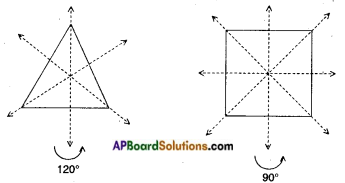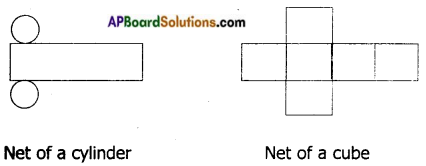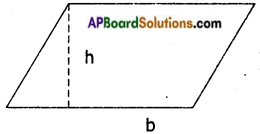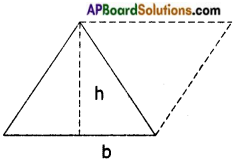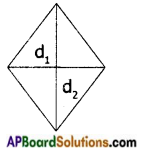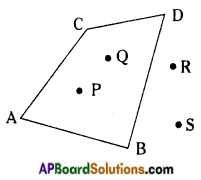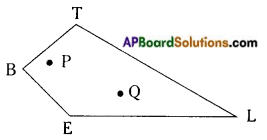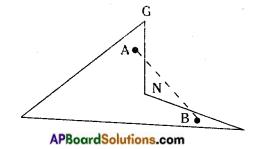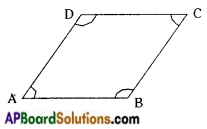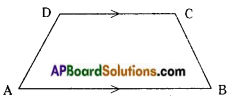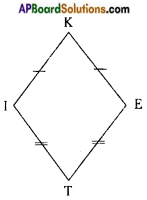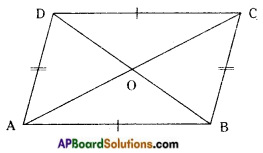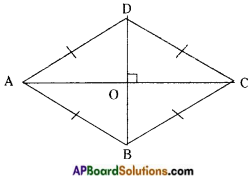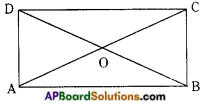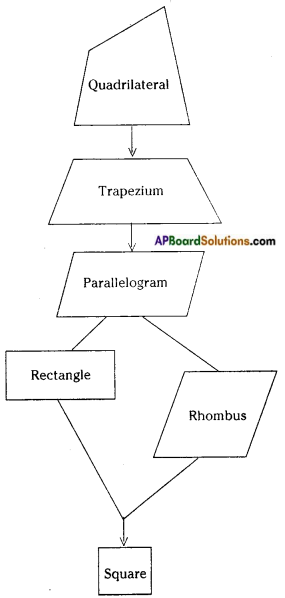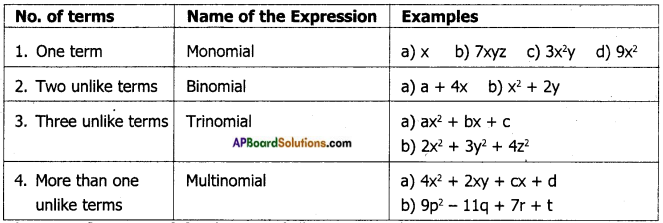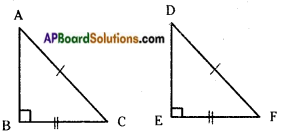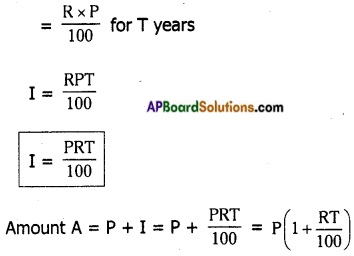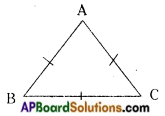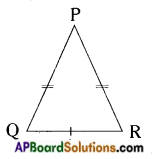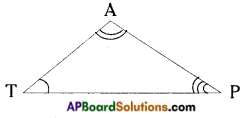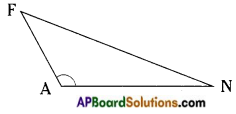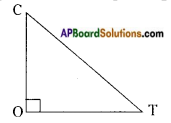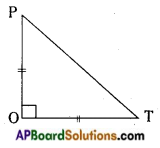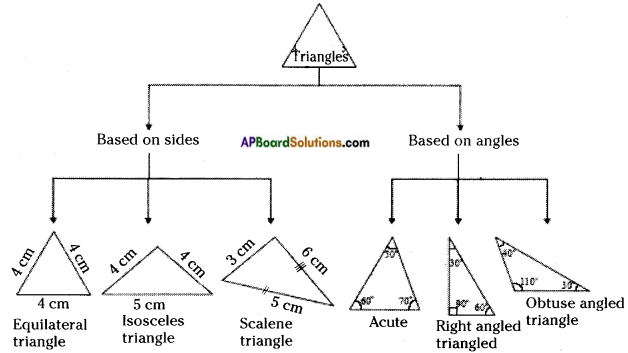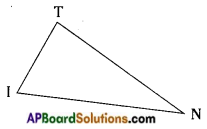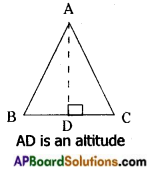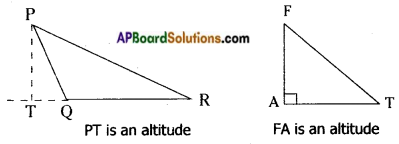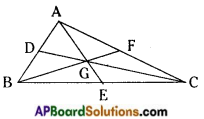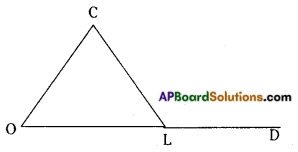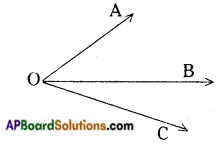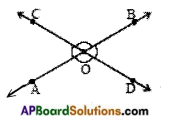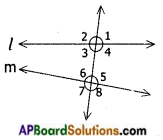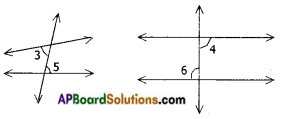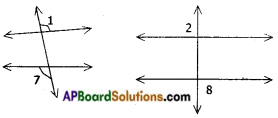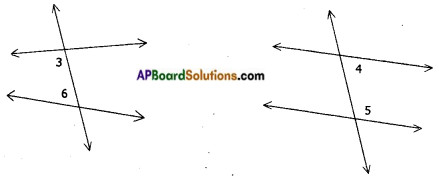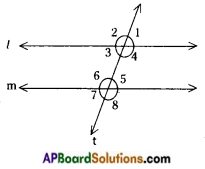Students can go through AP Board 7th Class Maths Notes Chapter 15 Symmetry to understand and remember the concepts easily.
AP State Board Syllabus 7th Class Maths Notes Chapter 15 Symmetry
→ Line of symmetry: The line which divides a figure into two identical parts is called the line of symmetry or axis of symmetry.
Ex: In the adjacent figure the dotted lines are the line of symmetry.
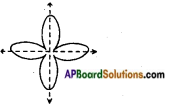
→ An object can have one or more than one lines of symmetry or axes of symmetry.
Ex: In the above figure there are two lines of symmetry.
![]()
→ If we rotate a figure, about a fixed point by a certain angle and the figure looks exactly the same as before, we say that the figure has rotational symmetry.
Ex: An equilateral triangle; a square etc.
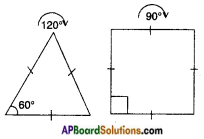
→ The angle of turning during rotation is called the angle of rotation (or) the minimum angle rotation of a figure to get exactly the same figure as original is called the angle of rotation.
Ex: i) Angle of rotation of an equilateral triangle = 120°.
ii) Angle of rotation of a square = 90°.
→ All figures having rotational symmetry of order 1, can be rotated completely through 360° to come back to their original position. So we say that an object has rotational symmetry only when the order of symmetry is more than 1.
Eg: The order of rotational symmetry for an equilateral triangle is 3.
ii) For a square is 4.
![]()
→ Some shapes only have line symmetry and some have only rotational symmetry and some have both. Squares, equilateral triangles and circles have both line symmetry and rotational symmetry.
